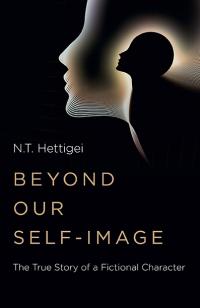
(This paper was originally intended to be read by Frank Smecker for Zero Books' panel, 'Theory vs. Praxis, or What is Praxis?, at the 2015 Left Forum.)
Less than a week ago, as I was anxiously brooding over what I’d be coming out here with, staring blankly at a motley patchwork of text—(what is sometimes less modestly referred to as a collection of
notes)—it was appropriately timed that I was fortunate enough to come across Jonathan Lear’s essay, “Give Dora a Break! A Tale of Eros and Emotional Disruption”—an essay in which the author
introduces the notion of what he calls an “enigmatic term,” which, being virtually indistinguishable from Jacque Lacan’s Master Signifier, provided me, incidentally enough, with an anchoring point
around which I could thenceforth structure my notes coherently. So thank you, Mr. Lear, for that advantageous heuristic, on the fortuitous account of which I now have something to present.
Is this not how things always begin?—first in a harrying mess before something unexpectedly intervenes, something that, in the end, manages to shore everything up into a neat and tidy consolidation.
Let me simply say that this amounts to something strictly comparable to what is elsewhere called history, or, to speak in the jargony parlance of theory, the reification of radical contingency, if I
may call it that…
A true atheist will understand what I’m getting at here, namely that this intrusion-of-something exemplifies perfectly well what we ought to make of God, this propping up of the world.
Rather than calling Him into question, one could learn a great deal by recognizing in God the profound mark of a true and blue Master Signifier, that primordial empty signifier which simply
represents signifierness as such; which not only intervenes in the form of the Word, inaugurating the contingent beginning of an errant life always-already in need of governance by God’s Holy Law or
what have you, but that, moreover, like everything else touched by thought, this pure signifier, and every other one like it, eventually gets everything around it neatly consolidated, condensed into
something without which everything would consequently fall apart and be a mess again. I urge those who haven't already to read Plato’s Laws some time; he shows that the human mind has a
predilection for inventing this very perplexity of an invisible actor always pulling strings from some place that corresponds to no real experience. Is it not appropriate, then, that we have
names for such an unaccountable agent: God, the “invisible hand,” history, Nature, some manifestations of science, even, and so on?
In a very strict sense, this is what I’m here to discuss today, which I hope will point up not only how the polis enables man to engage in both lexis and praxis but,
curiously enough, how the former and latter are antecedent to, how they serve as the very condition of possibility for, the polis as such. A paradox, I know, but only at first glance. For I
firmly suppose that one can untangle this raveled knot in which, as I will show, metaphor and metonymy are intricately twisted together into the confused mess we find before us; this mess in which
God is both metaphor for the absent position He takes the place of, and, metonym for the entire signifying economy He represents. We can, I believe, catch a glimmer of the real in this wide net of
signification once we recognize that the authority of reference—the proverbial master who keeps our knot tightly, compactly, jointly together—effectively obfuscates the underlying dimensions of
language that prop up this entire charade in all its divine glory, namely: the underlying matrices of signification which, as Paul de Man once astutely observed, consist in “a vast thematic and
semiotic network” that structures our narratives and produces our subjectivities.
Now, if there is something definitive that can be said about the general situation we’re in, at the broad level, today, it’s that things are awfully close to becoming such a wholesale mess; so close,
in fact, that many claim this mess to have already been made, and that the salient characteristic of contemporary life is the detritus of our times—its flotsam, its debris. That might not be
such a terrible thing; suffice it to recall what Lacan told his audience during his tenth seminar: “What culture transports to us in the guise of the world is a stack, a shop crammed full of the
flotsam and jetsam of worlds that have followed one after the other.” What we have before us, then, this debris, is none other than a manifold of sorts, which amounts to a combinatory that will
eventually “join up with the structure of the brain,” a structure the shape of which is yet to be determined, however. That is what I am putting under consideration in this paper.
Well then, what can be said about the overall structure of the discourse in which we are implicated as subjects, today? And by discourse I mean that which structures the relations that constitute our
present social order. Suffice it to say that, since the advent of capitalism the master has been displaced. Consequently, that which keeps everything in order, though nonetheless swaying precariously
within a tensely tight space that’s a hair’s-width away from toppling into socio-political ruin, is the set of relations between things that has taken the place of the relations between people. This
relational adjustment, reified into what many of us know today as “structural adjustment”—which we find diffused throughout the predominant social field the world over, and which was effectuated by
the advent of capitalism and the subsequent liberation of world markets; markets that have been marshaled into an iniquitous harmony at the behest of an experimental spirit which finds its apogee of
expression in the brute and aggravated cruelty of financial austerity; a spirit made further frustrated by capital's ongoing series of convulsive stages—is obvious. Domination and servitude may no
longer manifest so transparently in the form of, say, lord and serf, master and slave. But since the establishment of bourgeois society, these relations of dominance have appeared acutely in the
guise of the social relations held between things, between commodities, between those thneeds that express the relative value of board feet of Truffula trees. And these structural relations
are reified today into institutions of mastery to be managed by administrative hierarchies of specialists whom benefit directly from exploiting said institutions as mechanisms of class
warfare.
What I’m trying to illustrate here, is that, in the present age we are in the perilous position of needing a new Master Signifier. Our symptoms show that we are yet again passing through the
hysteric’s discourse, and are thus in urgent need of sweeping the ground clear of all idols, fetishes, and gods, in order to open up the condition of possibility by which we can create something new
in such a clearing. As Baudelaire once declared in Le Voyage, “Deep in the Unknown to find the new!” Ah, and to what avail? asks the contrarian, or the skeptic, or the cynic, or
the… Let me just say, that by toeing the present line, the destructive drive that is conducted by the directives of capital will continue onward towards its dreadfully messy conclusion. For we are no
strangers to this almost irresistible compulsion to grossly consume, to engage addictively with everything that is producing the ongoing economic, social, political, and environmental crises that
conduce to the deep cultural malaise afflicting society today; a malaise that, arguably, has as its basis the veritable threat of exacerbating an already extant period of mass extinction. The global
oligarchies, of course, exploit to their own benefit this compulsion to grossly consume, a compulsion we ourselves can easily slip into, and which comes at the cost of the planet and the many
lives it supports. Profit is not exempt from the law of entropy; though this law itself is not immune to perversion, for capital has a way of galvanizing itself in the wake of the disorder it
creates. Thus a restructuring of the world’s economies is not just possible, it’s categorically imperative. To borrow the words of Naomi Klein, the global economies must be restructured so that the
most vulnerable are protected, and so that those most responsible for today’s crippling issues are the ones “bearing the bulk of the burden.”
Before tying all this into the question of the day, that of theory and praxis, I should probably pause here and provide a bit of background information as regards the importance, in my view, of
shuttling in methodology pertinent to structuralism, Freudian-Lacanian psychoanalytic theory, and textual analysis, to the vague question of praxis and its thorny if not parlously-unpredictable
relationship to what is often bandied about in equally hazy terms, namely, theory. But I’m not going to do that, mainly because I have a tremendous amount of material to go over in a brief amount of
time, and I suspect that any questions that may crop up will be answered along the tortuous path I’ve already started to beat into shape. And if things do remain somewhat vague for you, consider this
my intention. I want to lead the audience today directly into the heart of an ambiguity that will forever remain the condition of possibility for theory and praxis. And if there is something to be
taken away from all this, it’s that one must apply a little elbow grease, one must work, as Lacan often put it, for such a result.
Now, I’ve kept you all waiting long enough. So, to return to Lear’s “enigmatic term” … it really is too similar, I think, to Lacan’s Master Signifier, so that’s how I’m going to refer to it
today, as a Master Signifier. What specifies this signifier is its function, which is specific to, and crucial for, discourse, and discourse, as Lacan put it in his seventeenth seminar—which, fitting
enough, he delivered at the Law Faculty, Place du Panthéon—is what structures a given social field. The role of the Master Signifier is, on the whole, to assume the structural position of a space
that is essentially empty. In fact, as a pure signifier, the Master Signifier refers only to itself; as such it has no battery of predicates that can tell us something about itself. We thus know next
to nothing about this signifier (other than its own name, of course) because there is absolutely nothing beneath it to know, to which it directly refers.
This nothing, essentially, is the pure signifier as such; its only content is this void itself. And I know, the “void” is not without its elements of caricature these days; regardless, I
insist on using this term, free of any burlesque modifiers. Anyway, if you analyze this particular signifier closely enough you will certainly see that in referring only to itself, and thus having no
other signification, no content whatsoever other than its own name, this breed of signifier refers only to a purely formal emptiness, and that such a signifier takes the place of this absence which
precedes it. What we can say, then, is that the Master Signifier embodies a formal lack, a space that—to be somewhat hasty with this definition—bears the mark of pure difference between a thing’s
identity (which is often a bricolage of defining characteristics borrowed from other things) and a thing’s empty place of inscription. This is what it means to say that there is difference within
sameness itself—Hegel’s infamous “speculative identity.” It also means that there is no whole. This I will explain further on.
And so the master is split, fractured as such. What else can I say? The emperor has no clothes, though this he’ll never admit to.
In any case, this fundamental division, a sort of a priori fissure, on a level with some kind of original sin, reveals the presence of a formal void which sustains the field of symbolic
identification that unfolds around it precisely when a Master Signifier—a signifier that refers only to itself—occupies, that is, takes the place of, this purely formal empty space. The
Master Signifier thereby designates this vacant locale metaphorically by way of a certain kind of pro-nominalization that then embodies the very order for which the Master Signifier is also a
metonym, thus substituting itself for what is otherwise an arrantly opaque and perplexing area. Saying that the King is the King, and that he presides over the very kingdom he represents and thereby
reflects outward to all his dutiful subjects, can sum all this up very nicely: for the King is a metaphor for his own absence, and a metonym of his own domain, his own province and the discourse that
structures it. Remove the King, and the kingdom is rendered a vague and structureless multitude of disparate particulars.
That, ladies and gentlemen, is the Master Signifier in all its tautological glory.
The crucial point is that a Master Signifier functions as a structuring principle. Those who have read their fair share of Zizek understand that this signifier is an irrational element that gives
rise to a rationally contextualized order. Though it also serves as the basis for a formal indication of the structural limitation of the very order it gives rise to. Which is what I’ll be zeroing in
on today.
I assure you, that as I tease all this out, you’ll see that I’m not talking about abstract theoretical issues here but about a very concrete social phenomenon, something pertinent to the question of
theory and praxis. Now, in leaving my discussion of the Master Signifier to the side for the moment, I will say that, by showing to you that the antagonism between theory and praxis is a false
antagonism—which I believe it is—this evaluation, I hope, will profane the spell that this false contradiction has had over us. The contradiction between theory and praxis, I’m convinced of this, is
a subterfuge which often obscures from view a much more veritable antagonism internal to the social order, from which the theory-praxis duplet emerges.
And since I’m speaking of the false antagonism between theory and praxis, and its demystification, I’ll now take you to the pith of the fable of Belling the Cat, an apposite digression,
for it demonstrates quite tellingly what I’m getting at here, which is that, at first blush, there often appears to be an irreducible difference, a veritable divide, between an idea and the concerted
actions needed to bring a given idea to fruition. Surely putting a bell around the cat’s neck seems like a great idea, but at the end of the day, after all the general applause by which the assembly
of mice extol such a proposal, none of the little critters are lining up for the job. Perhaps it’s out of fear that the inadequacies of reality may, more likely than not, trickle into their little
scheme, acquainting them with that state of feline-induced trauma whence their imaginative dreams of a belled cat first derived. Yet a closer reading of this fable may show us that it’s an underlying
condition of incompleteness, of fragmentation, of difference in itself—of a life-world so topsy-turvy, vulnerable to tumult and other dangers, if not just simple incertitude—that gives the question
of theory and praxis all its significance. Theory and praxis emerge together out of a problem. And so we must consider the split between theory and praxis as being representative of an
antagonism that is internal to the social whole itself. That is to say, the theory/praxis split is a symbolic opposition representing a formal deadlock that amounts to a real problem, a
problem that serves as the very condition of possibility for theory and praxis, which together in their aim gives rise to a solution, viable or not. The antagonism we are after, then, is not that
between the per se idea of belling the cat, and the actual belling of the cat; the antagonism is not even that which is represented by the difference between our little murine and
feline examples (which stand for sexual difference, of course). Rather, we should think of the real antagonism—that which gives rise to theory and praxis—as difference in itself, as a
difference that is both antecedent and irreducible to any symbolic opposition: a “third element," Zizek counsels, "that belies the false duality.” And what is this third element, the inconsistency of
which haunts all symbolic binary oppositions? To stick with our fable this third element is perhaps represented by none other than the old mouse who breaks the applause of the others with his
following asseveration: “IT IS EASY TO PROPOSE IMPOSSIBLE REMEDIES.” This is surely another way of stating that the sheer inaccessibility of jouissance is none other than the condition of
possibility for its ceaseless presence; for the very gesture aimed at the dismissal of jouissance inevitably becomes infected by this impossible jouissance. In other words, as
Zizek puts it in his book Absolute Recoil, “we are forced to accept the impossibility of reaching a certain goal; then, we are unable to get rid of what we were in vain trying to reach.”
Now, the following question may seem like a non sequitur, though I assure you it isn’t. What do we know of black boxes? Well we know that they retain information about a problem. That said, the
divide that takes shape between theory and praxis should be treated as a special sort of black box, one in which, to appropriate a string of terms used by Fredric Jameson, infrastructure and
superstructure are co-implicated in each other, thereby representing a dicey whole, as it were, that paradoxically resituates theory, praxis, and their difference, within itself. I am discussing
namely a form of totality that forever remains—for lack of a better term—”constitutively split” as such.
In terms of effectively delimiting and parsing the information that this aporetic black box contains, I’m proffering today a practice of close reading, a practice of rigorous reading that has been
put to use by many a thinker who’ve already set this precedent in place for us, which allows us to thematize properly not the content but the form of such a whole, whereby the ostensible
polarity between theory and praxis can be productively mapped and thus arrayed in the manner of “manifest content,” whereby certain combinations may unfold in a certain order, and whereby the black
box of theory and praxis itself is exposed for what it truly is: not a neutral position that simply holds two contradictory elements together at once for the sake of armchair analysis, but rather a
dialectical structure that culminates in a formal compliance between a whole and its formatively fragmentary inconsistencies. For if it is the function of a black box to disclose to us all that has
gone wrong in what has otherwise seemed to be a stable figuration for a system in motion, then we must insist that the site of a problem is likewise the fecund site of knowledge production in which,
through which, and by which new and exciting ideas can and shall take hold; ideas which will come to engender novel configurations of praxis aimed towards sustaining a body of disparate signifiers
that, despite moments of deformation, perdures in an ongoing motion of re-structuration, re-configuration, re-formation, and, eventually, revolution.
To put it in simple Marxist terms, theory and praxis can appear as two inseparable moments, no doubt; they may seem to belong to, and mutually condition, each other. Yet be that as it may, at the
same time, they can often appear conversely: as being entirely mutually exclusive, as two extremes, isolated, far removed and irreducible to each other. The only common signal of communication they
tend to share with each other, it would seem, is that of a fulguration, as it were: a violent upshot of sparks caused by a faulty disturbance that expresses the very tension and friction that is
constitutive not only of the relation between each other, but at a much more radical, fundamental level, a relation they both share in unison with the dynamic matrix out of which they arise. If this
is evocative of the image of a short circuit occurring against the background of a closed, smooth-functioning network, well, that’s because it’s supposed to be. Short-circuiting, of course, is a
metaphor for what has proven to be an enduring practice of high-yielding, close reading; an analytic technique that brings to light a text’s disavowed presuppositions and consequences.
Suffice it to mention, then, the opening of Reading Capital, wherein Louis Althusser named two strategies of such a close reading: (1) meaning is not to be glossed from any sort of depth
hermeneutics; rather, it’s to be found along the pre-given surface and only along the pre-given surface of a text—that is to say, latent material is not hiding beneath a series of onion layers that
bring us to tears with every arduous peeling-back, but is instead always-already loitering somewhere along the surface of a text, found in the literal manifestation of the text itself. Thus we treat
the text as a whole object (and, ceteris paribus, we can treat any form of wholeness as a text). The second reading strategy that Althusser proffered, quickly undermines this form of
wholeness of the text, as it focuses on the blindspots of a given text, on that which cannot be stated in a given text, thereby zeroing in on lacunae and inconsistency, lapsus and contradiction—for
this is the underlying condition that makes a text possible. And certainly, there is a high degree of these reading strategies deployed in Paul de Man’s reading of Rilke, whereto he closely
questions the “convergence of meaning with the linguistic devices used to convey it.” I wholeheartedly believe that these strategies reveal, quite effectively, the fact that mastery serves to conceal
what it cannot master.
Thus we are on the lookout for a text’s symptoms, for that which resists communication, or, what is the same, for antagonisms that, as such, mark the defining limit of the symbolic totality from
which such symptomatic characteristics obliquely display themselves. We shall see that the repression of certain elements which engenders a symptomatology—the attempt to reconcile what are
essentially immutable, irreconcilable antagonisms by screening them over with “this” specious narrative or “that” specious narrative, viz., fantasy, ideology, and
so on, presided over, of course, by a Master Signifier that serves to guarantee the given narrative order and thereby sustain the semblance of its inner consistency—not only precipitates the
formation of a symbolic whole, such repression also serves as the very condition of possibility of a sort of “formal transit,” by which I mean a kind of eventual rupture that spurs and
facilitates the contingent distribution of these symptomatic kernels, and thereby perpetuates the proliferation of diverse forms of subsequent structural determination. This is all very dense, I
know.
Put much more simply, the displacement of inner antagonisms gives rise to new formations. The inner antagonisms of life itself, even, if I can speak so broadly of a very cumbersome subject, the
tensions between man and environment, for example, give rise to knowledge, to forms of mastery which structure and thereby en-/in-form the new matter at hand… Hence a historical
record which discloses a protean subjectivity that changes its shape with every ideological shift, epoch after epoch.
Can we not, then, treat the question of theory and praxis in the same way? Does praxis not change with every theoretical shift, ideal after ideal? As Lieutenant General Corman tells Captain Willard
in Apocalypse Now, Kurtz’s methods became unsound the moment his ideas became unsound; a derangement that was always-already at the very core of the normative state from which
Kurtz split. This, then, would imply some sort of structural contiguity between theory and praxis, invoking the image of an ill-proportioned whole, lopsided and characterized by a plastic
metastability, frequently undergoing contingent moments of metamorphosis; autoimmunistic deformations and reformations. The differential structure in which theory and praxis appear to be enmeshed
shows us that forms of wholeness, of unity, are instead fragmented bodies, inconsistent worlds, and fractured selves that comprise a patchy multitude of disproportionate constituents, i.e., elements
that are more or less incommensurate with one another. Thus wholes are, according to this account, far from seamless. They are riddled with cavities that retrench their presupposed wholeness,
exhibiting zones of formal separation that bear the mark of absolute difference-in-itself. To recognize this is to sedulously scour the surface of a whole and to locate and fully grasp the function
of the Master Signifier that keeps the whole together, which, to reemphasize a point broached earlier, serves to conceal what it cannot master: those inherent differences and inconsistencies of the
real itself, which are embedded in the very constitution of the whole itself, and which return in the form of its symptoms—slips, paradoxes, contradictions, dream-like figurations; a raft of
parapraxes that ripple across the surface of our whole world, reminding us again and again that its emperor has no clothes.
The question of theory and praxis, then, is to show not only that—but also how—these abyssal patches of pure difference-in-itself, situated across the surface of symbolic totalities, serve
as the condition of possibility for the genesis (and degeneration) of formal structure “as such,” thereby attributing to such forms of wholeness a unique dynamism, such that forms of wholeness are at
the same time both exceedingly susceptible to change and, despite their structural lacunae, durable to a polymeric degree. As Paul Livingston puts it in his essay, “How do we recognize strong
critique?”: “formalism itself provides, when pushed to its limits, the basis for a formal indication of the structure of these limits themselves.” Such limits are thus none other than points at which
the structure of a whole breaks down into a state of inconsistency; they are “void” sites of absolute difference-in-itself, which, in turn, serve as the impetus behind both the genesis of structure
and its transformation, or, what is the same, they are what Deleuze considered to be gaps that induce a constant repositioning of frontiers, and which serve as the basis of “permanent
revolution.”
There is, then, a common thread that sutures, as it were, the hair’s-width difference between theory and praxis, which is none other than process—the process of fabricating a new Master
Signifier. One can discern this unique thread in William Langland’s proto-Marxist poetic masterwork, Piers Plowman, which reminds us that when we are weary of wandering we go to rest, though
even in dreams our wandering persists in search of that divinely consummate X. There is a constant—"processual"—activity at play in both theorization and, the practical measures we
take as our aim to bring such theoretical ideals to fruition.
The crucial point here is that theory is the information/enformation of praxis, and praxis is the process by which this occurs, by which our minds open up to a vertiginous imagination that
can do more than just aid in the productive interpretation of a given narrative—it can glom onto a form of rigorous reading that is fully capable of boring down into the radical source of narration
itself, which is the irreducible difference between, say, grammar and rhetoric: namely, how the principle matrices of grammar cause the erumpent eclosion of the forms of figuration which
retroactively give voice to their preceding, underlying, grammatical syntagms. Paul de Man skillfully identifies this twisting of language, of rhetoric and grammar, in his essay “Semiology and
Rhetoric”: voice is a metaphor that “infers by analogy the intent of the subject from the structure of the predicate.” Can we not think theory and praxis along similar lines? The intent of a
given praxis can be inferred from the structure of its theory. Or should it be the other way around? These two elements twist around each other in their difference.
The difference between theory and praxis is a difference that precedes and undergirds theory and praxis; an eternally open space of infinite proportions, to put it fulsomely; a gap that retrenches
the presupposed wholeness of the given order with which theory and praxis concern themselves; a zone of formal separation that bears the mark of absolute difference-in-itself. Voice is the process of
naming this space, of giving it a Master Signifier. This space is therefore productively opaque in that it’s an open vista we can, and must, and more often than not, do, encroach upon; it’s a space
that is none other than a perennial site of the prolific possibility of (re-/de-) construction, or at least that is how I insist on considering it, as a space always-already reserved for a strategic
intervention into our socio-symbolic order, whereby a wrinkle can be shoved into place, formed along the very topos of this order, whereupon we can perhaps fold theory back onto itself and
redefine the rules of its own game, so to speak.
What I’m getting at here is very much akin to what Paul Livingston calls a “paradoxico-critical orientation,” which, as he puts it, serves as a basis for contesting, interrogating, and even
overturning the very ideological field that reflects the form of a contradictory whole.
I’m suggesting we treat the question of theory and praxis similarly, that is: as emerging from a structural problem, and, no less important, as a textual object to be put under close analysis. Such a
theoretical practice of an actively engaged reading not only can—but also must—be put to use in our engagement with the contradictions of capitalism, which proliferate all around us day in
and day out, perpetuating capitalism’s ongoing metastasization. By rigorously reading the discourse in which we as subjects are implicated, we will not only ascertain a stronger
comprehension of the workings of today’s global capital, and not only will we be given a stronger means of critique of capital’s totalizing force and its structural, though constitutive,
contradictions; we will also, by being on the lookout for its symptoms—such as, e.g., today’s proletariat’s lack of a proper place in the social body as being none other than a signal for the
universal truth of a society in which exists such ignored and plighted populations—cultivate a deep insight whereby we can, through realizing that crisis, contradiction, symptoms—void areas as
such—are all synonymous for the condition of structural genesis, of structural degeneration and generation. With such insight, I wholeheartedly believe that we can, and thus insist that we
ought, to exploit these sites of “eternal revolution” for the dangerous and risky sake of ushering in a completely new formation. This much we can accomplish with theory and praxis.
Categories:
comments on this article
This thread has been closed from taking new comments.









